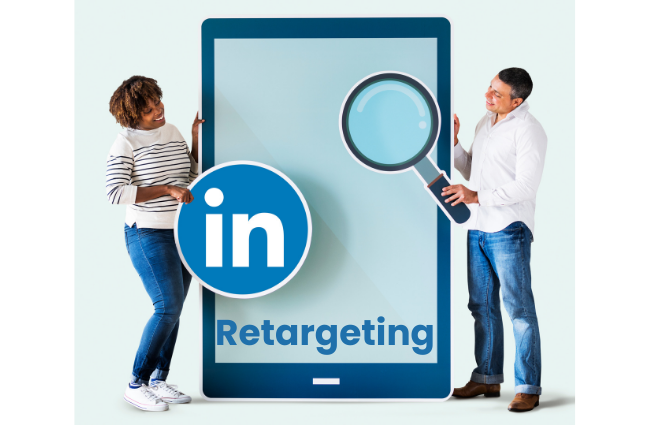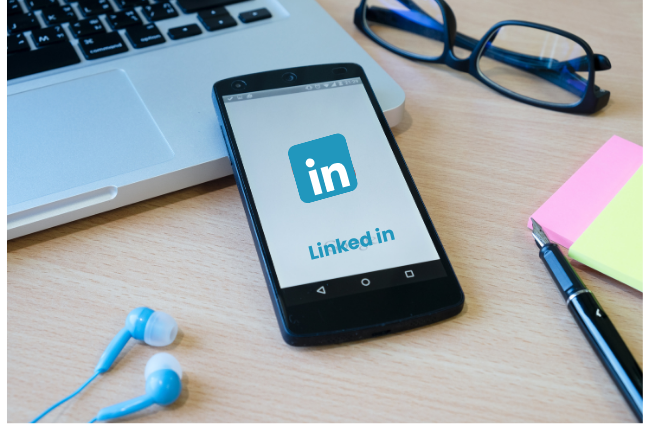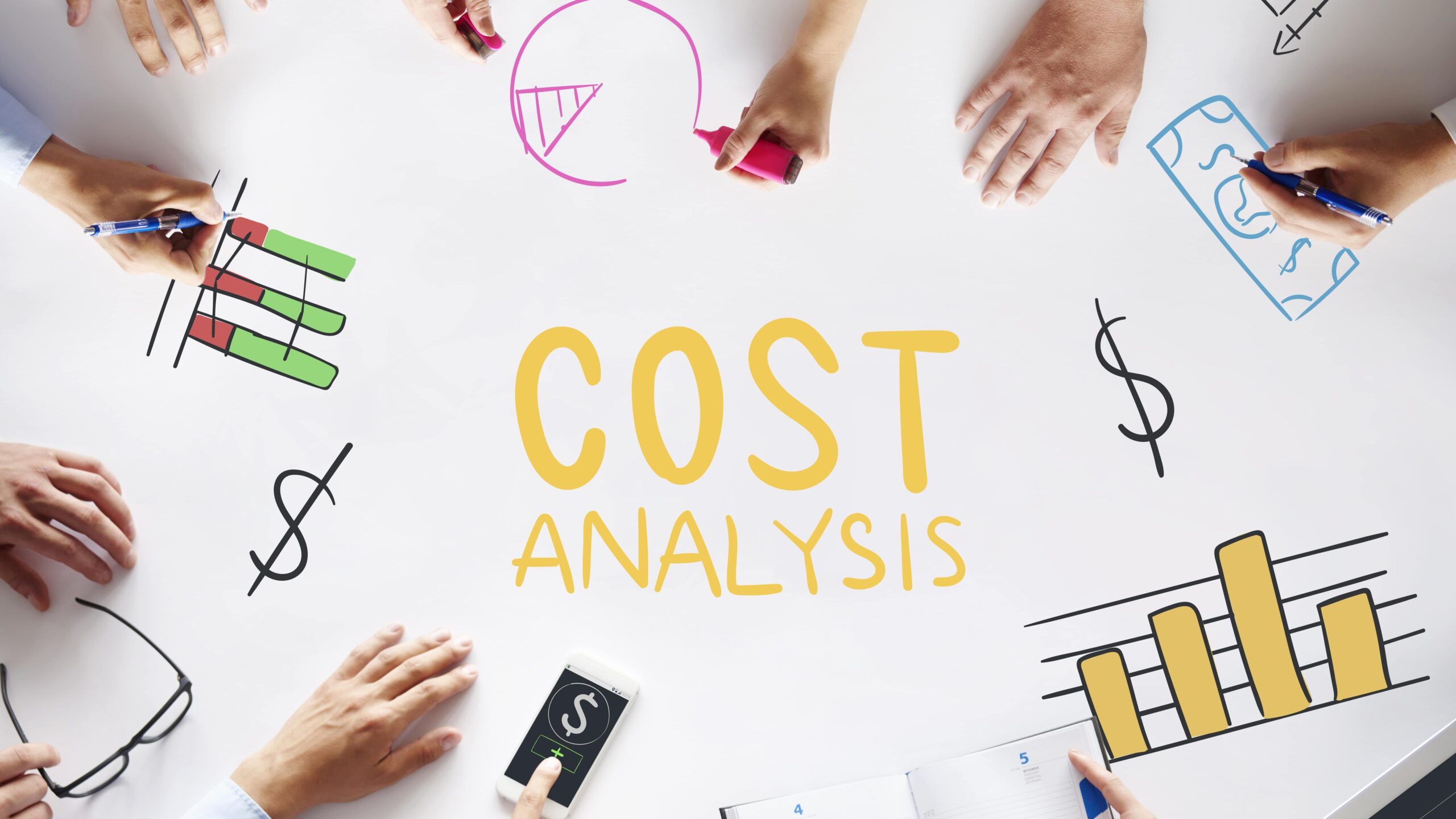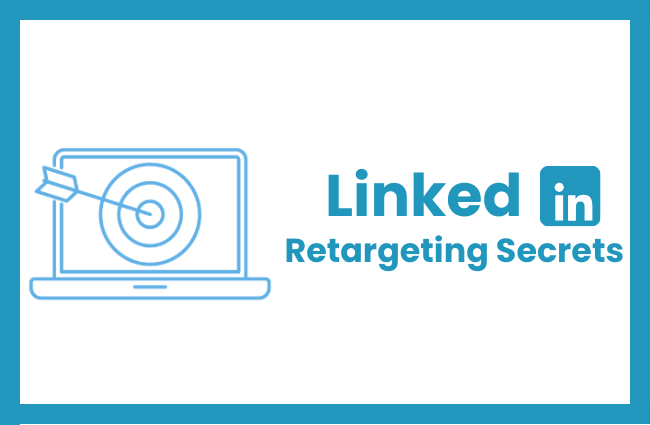In the fast-paced digital marketing world, there’s probably no other strategy that can keep potential customers engaged and make the conversion wheel continuous than retargeting. Of all the platforms considered powerful for this, LinkedIn leads the way in businesses focused on B2B marketing. Recently suggested digital marketing services in UK have come to provide a very exclusive environment wherein professionals interact with each other. Thus, it is one of the most highly valued platforms wherein brands target decision-makers, industry experts, and professionals.
The following is a step-by-step guide on crafting the LinkedIn Retargeting strategy in terms of what it is, how it works, the added value for business, and how they could apply it to their marketing strategy in order to make results come into view.
What is LinkedIn Retargeting?

It’s a LinkedIn marketing strategy to reconnect with people who clicked on your brand within the platform or other digital media. Retargeting helps in targeting those people who show interest in your brands, products, and services through visitation of your LinkedIn page, website, or interaction with your contents. You can then re-target these users with ad serving, driving them to do that desired action —whether it be a form fill, purchase, or sign-up.
LinkedIn Retargeting functions through the LinkedIn advertisement platform. It provides an opportunity to publish the ad which is most likely to be appealing for the consumers. Marketers create ad experiences based on previous information that implies users have already been exposed to the brand.
How LinkedIn Retargeting Works
LinkedIn retargeting is powered by LinkedIn’s Campaign Manager, where marketers can create and manage retargeting campaigns. Here’s a step-by-step breakdown of how it works:
1. Install the LinkedIn Insight Tag
A LinkedIn Insight Tag is a snippet you place on your site to track who’s been there and what they’ve done, enabling a LinkedIn retargeting strategy for more effective engagement. After the tag has been set up, LinkedIn will start collecting important information about user behaviors: page views, time spent on the website, specific actions like form completions or whitepaper downloads, etc., all for developing audiences to be targeted again through your campaigns.
2. Create a Retargeting Audience
When it’s installed and collecting data, then you may create your retargeting audiences through the LinkedIn Campaign Manager. An audience involves users who have visited or interacted with your website, LinkedIn page, or ads. You’ll be able to segment these audiences into even smaller groups based on specific actions such as:
- Site Users
- People who have filled out a form to generate leads.
- Those visiting LinkedIn
- Video viewers
- Users who engaged with a post or an ad.
By segmenting audiences this way, there is also more focused, customized ad campaign creation.
3. Set Up Your Campaign
You can then set that up and create an ad on LinkedIn targeting their behaviors or specific interests. Now there are a couple of different ad formats available for LinkedIn:
- Sponsored Content
- Sponsored InMail
- Text Ads
- Dynamic ad
- Video Advertisement
Each type of ad serves a different purpose, and you can use them all to bring across distinct messages for your retargeted audience. For example, suppose a user visited the product page and did not make any purchase. You can show them a Sponsored Content Ad—either promoting some benefit on that product or offering it on discount.
4. Monitor and Optimize
When a campaign is running, it’s also important to track performance and do some edits. Some of the best analytics to track precisely how your ads are working are on LinkedIn. Consecutively, this will enable further optimization for better performance of the campaign. This can be a modification in targets within audience segments, changing creatives within ads, and even trying different formats for ads.
Types of LinkedIn Retargeting
1. Website Retargeting
This is perhaps the most common form of retargeting—just targeting users who visited your site and did not complete some action, such as submitting a form, making a purchase, or otherwise. The LinkedIn Insight Tag allows us to know which website visitors may turn into clients when we target them with ads tailored to fit what they visited and did on our site.
2. Lead Gen Form Retargeting
This compares with other marketing activities, in which LinkedIn lead gen forms capture leads directly on the platform without having to pass through your website. Retargeting with Lead Gen Forms helps target the individuals opening or submitting your forms. This is just ideal for those who are interested in your offer but were not able to complete submission of the form.
3. Video Retargeting

If you ever ran a video ad on LinkedIn, you know it lets you re-target users based on how much of the video they’ve viewed. For example, perhaps you want to target those viewers who viewed 50% of your video with a follow-up ad giving more detail about your product or service.
4. Event Retargeting
You can also re-target people who signed up for or attended a LinkedIn event using a LinkedIn retargeting strategy. This is really great for lead nurturing when people show interest in your webinars, virtual events, or any live session.
5. Engagement Retargeting
It would be that type of retargeting in which users connect with your content on LinkedIn by liking, commenting, or sharing. Engagement retargeting keeps your brand top-of-mind with users already engaging with your content.
Benefits of LinkedIn Retargeting
LinkedIn retargeting offers several key benefits that make it an effective tool for B2B marketers:
1. Reach a Qualified Audience
LinkedIn is actually a professional networking site, which in turn means that the targeted audience you will be retargeting will most likely consist of professionals who are decision-makers and influencers in their respective industries. Therefore, this channel is very effective for B2B marketing, with audiences that are much more qualified and engaged compared to other social networks.
2. Improve Ad Relevance and Personalization
This is quite possible with LinkedIn’s retargeting, which depends on the behavioral demonstrated by the user. Your ad will even easily convert them into proper leads or get the right kind of responses since you target users who at least once had an interest in your brand.
3. Increase Conversion Rates
Retargeting such users, who in any case are engaged with your brand, increases the possibility of conversion. You will be able to move them closer to taking an action toward purchasing or signing up for a service by sending more focused messages that answer specifically what they need or are concerned about.
4. Lower Cost Per Acquisition (CPA)

Since LinkedIn retargeting addresses users already informed about your brand, acquiring them will usually cost much less compared to other methods. The lesser amount spent in conversion of the retargeted users results in reaching your marketing objectives at a reduced cost.
5. Enhance Brand Awareness and Trust
This is what retargeting does: keeps your brand in the top of their mind. Staying at their attention span with relevant and worthy content builds you as trustworthy and authoritative in the industry, so that once they are ready to make a purchase, they can do so from your brand.
Best Practices for LinkedIn Retargeting
To maximize the effectiveness of your LinkedIn retargeting campaigns, consider the following best practices for a successful LinkedIn retargeting strategy:
1. Segment Your Audience
Those users do not stand on an equal footing in the same step of the buying journey. That’s why segmentation of the audience is very important regarding behavior and level of engagement. You may create different targeting campaigns for website visitors, lead form openers, and video viewers; that gives you the capability to address a certain message toward the needs and interests of each group.
2. Use Compelling Creative
Your ad creative plays a crucial role in capturing users’ attention and driving engagement. Use eye-catching visuals, clear messaging, and a strong call-to-action (CTA) to encourage users to take the next step. Make sure your ad creative is relevant to the audience you’re targeting and addresses their pain points or interests.
3. Test Different Ad Formats
For example, LinkedIn allows a range of ad formats, so do not be afraid to try a few different ones to see which ones perform most strongly for your audience. You may find that Sponsored Content is great with a certain segment, whereas Video Ads work better with another.
4. Optimize for Mobile
A large number of LinkedIn members access the platform on their mobile devices; hence, it’s paramount that your ads are optimized for mobile. Ensure the ad creative and landing pages are mobile-friendly to ensure a seamless user experience.
5. Monitor and Adjust Campaigns
LinkedIn gives a thorough performance of your re-marketing campaigns: CTR, conversion rate, cost per conversion, and so forth. Take such data to track the performance of the campaign and make changes if necessary, in order to improve results.
FAQs
1. What is LinkedIn Retargeting?
Retargeting on LinkedIn is a marketing strategy through which businesses get to restart the conquest cycle with users who already have crossed paths with their brand in whatever instance it is through the medium of LinkedIn or any other digital source. It caters to personalized ads to these users, targeting them so they drive further action in terms of completing a purchase or signing up for services.
2. How does LinkedIn Retargeting work?
The Insight Tags create the source for its retargeting, tracking of the visitors’ and users’ interactions on the site. These create segmented audiences for ad campaigns with users who behave according to visiting a website, viewing a video, or interacting with a post on LI.
3. Why Businesses Should Use LinkedIn Retargeting?
On the whole, retargeting allows one more opportunity to feed a qualified and interested audience with the help of LinkedIn. Targeting the users who are already aware of the brand increases the possibility of conversion and relevance of ads, therefore increasing efficiency for the cost per acquisition and streamlining marketing efforts.
4. What are the kinds of LinkedIn Retargeting?
A few of its varieties are website retargeting, lead generation form retargeting, video retargeting, even event retargeting—engagement retargeting on LinkedIn. They all enable businesses to target users because of action taken upon the platform or inside their website.
5. How LinkedIn Retargeting will add value to a digital marketing agency in the UK?
It is a digital marketing agency based in the UK, but it uses LinkedIn to make professional outreaches for its ad campaign design. Therefore, it helps agencies help their customers reach major decision-makers and industry leaders increasing conversion and value for money, especially in B2B marketing.
Conclusion
LinkedIn’s retargeting can be incredibly powerful for businesses wanting to re-engage their potential customers and drive conversions. You are targeting users that have already interacted with your brand in one way or another, thus this personalizes and makes relevant advertisements, encouraging them to do an action. Whether it is a B2B marketer, a company targeting professionals, or a digital marketing agency in UK, adding LinkedIn retargeting to your marketing mix can be a great way to reach a better target audience, enhance your conversion rates, and consequently maximize ROI.
By knowing how the LinkedIn retargeting strategy works, from structuring well-organized campaigns down to the little things, you will unlock the real potential of this platform and achieve your desired marketing results.



